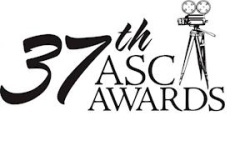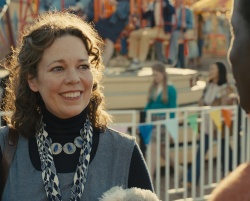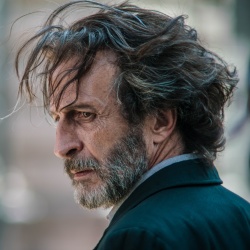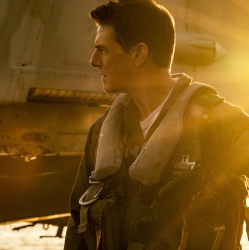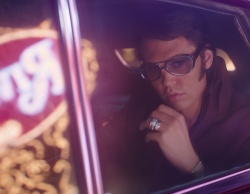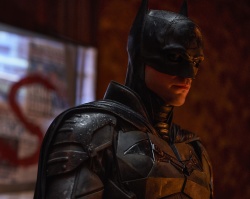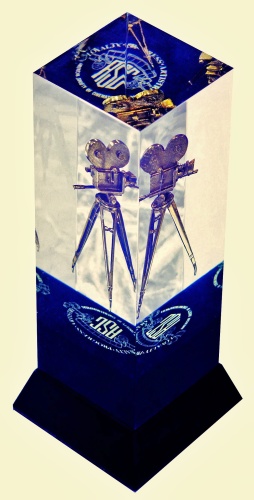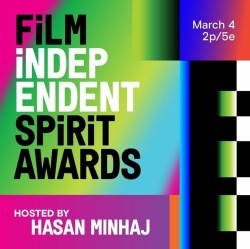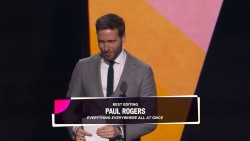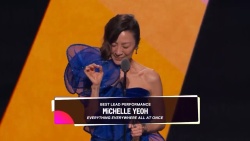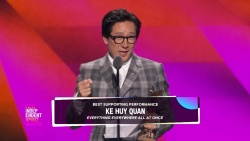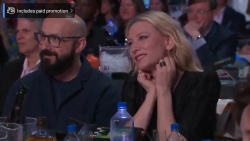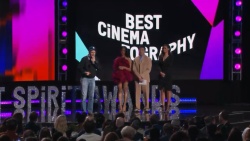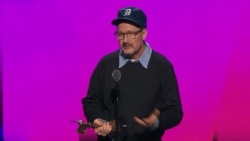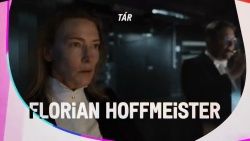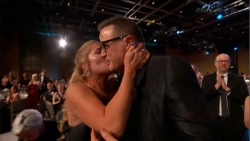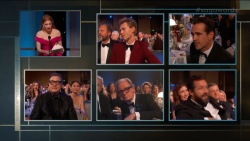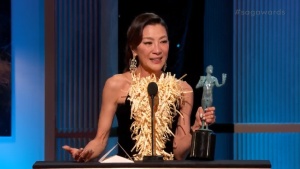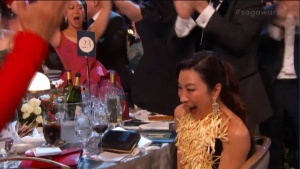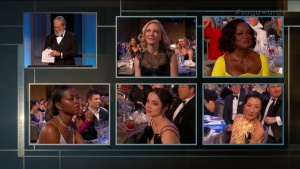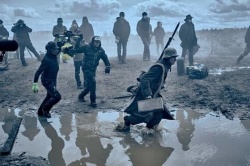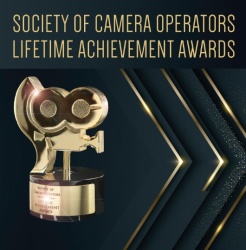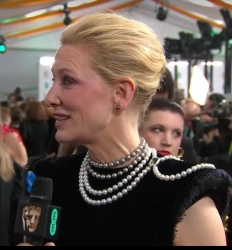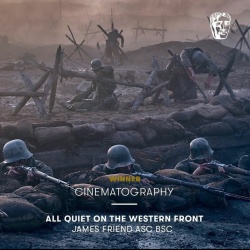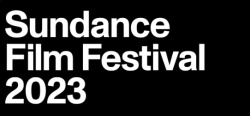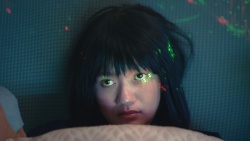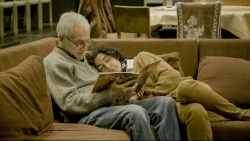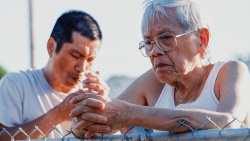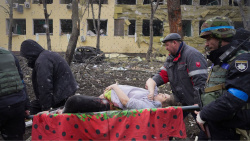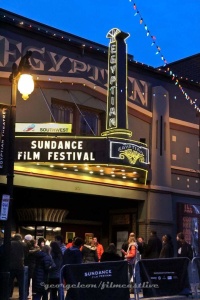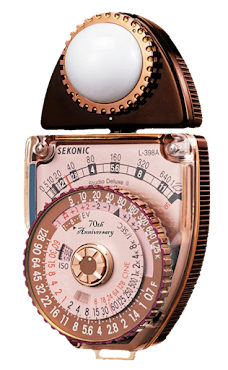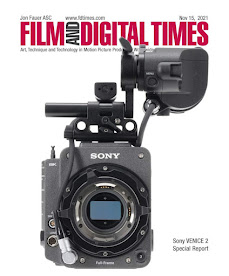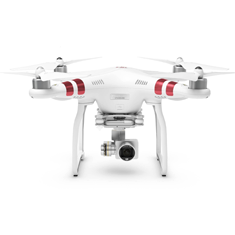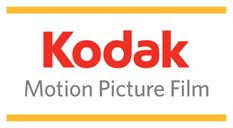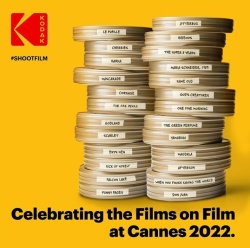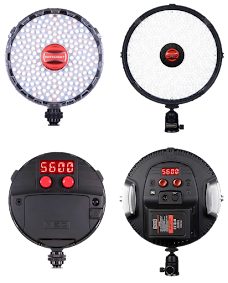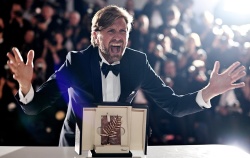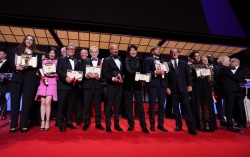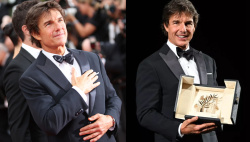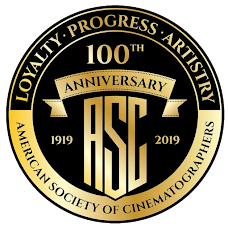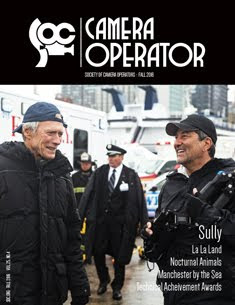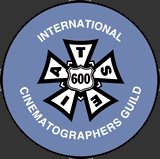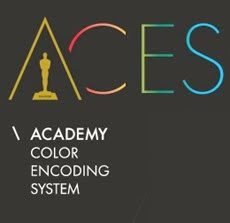BEST CINEMATOGRAPHY NOMINEES FOR THE 86TH OSCARS®
These are the nominees in the Cinematography category for the 86th Academy Awards with technical specifications. Note that the camera body of choice used by all these talented directors of photography in the nominated films was an Arri film body or a digital camera used for negative film stock photography or high definition digital acquisition.
On matter of lenses, the Panavision C-Series Anamorphic primes, ATZ/AW22 zooms and Panavision Primos were the choice for two of the nominees.
Emmanuel Lubezki, ASC AMC principal photography was achieved using Arri Alexa Studio and Plus cameras and a 65mm film camera, the Arri 765 with magazines loaded with Kodak 5219 65mm negative emulsion, a perfect film acquisition tool for digital intermediate processes and 4K workflows. All camera bodies were fitted at one time or another with Panavision Primos and Zeiss Master Primes lenses and a still medium format photography lens, the Hasselblad 765 to help him to capture
the emotion of the characters on their struggle for survival on this
weightless and sweeping outer-space 3D/CGI rendered drama.

Phedon Papamichael, ASC used Panavision Anamorphic lenses in Nebraska to capture the essence of Alexander Payne's color graded black and white road trip narrative. "The Panavision C-Series Anamorphic lenses helped me achieve a textural quality I was trying to find for Nebraska - the older glass helped reduce the sharpness off the digital image and gave it a more film-like cinematic feeling" said Papamichael.

Bruno Delbonnel ASC, AFC shoot "Inside Llewyn Davis" a York folk music story in the ‘60 on a single 35mm film stock, Kodak Vision T500/5219 1:85 aspect ratio and the cameras were Arricam LT and ST using Cooke S4 lenses. “The movie has a lot of magenta and cyan, which you can’t really get from a lab process, or at least not as controlled,” Delbonnel states. “The blooming and diffusion we added gave the feel of uncoated lenses. But I actually shot with the super sharp Cooke S4’s, with nothing over the lens at all. Uncoated lenses are uncontrollable – flares, etc. – and I needed to control the light and clarity [during shooting] at all times.”

Delbonnel crafted imagery that is low contrast, with little or no sunlight. That approach fit well with the short New York winter days, which only provided about six hours of daylight. “I don’t like the term ‘look,’” Delbonnel says. “To me, a ‘look’ is just fashion. You see it in fashion photography. It’s just an aesthetic, and in a couple of years it will be something else. It’s about emotion and the story. For Inside Llewyn Davis, I was looking for sadness, so I had to define it. Is it yellow? Is it green? I had to find a way to make this sadness with color and density and contrast. That is my job as a cinematographer.”


Roger Deakins A.S.C., B.S.C, C.B.E, received his eleventh Oscar
nomination for Prisioners, a dark and disturbing criminal kidnapping thriller shot
digitally using the ARRI Alexa Plus and Studio cameras fitted with
Zeiss Master Primes. Deakins elaborated a precisely unobtrusive
camerawork with
the perfect
amount of steady control to build tension, framing the storyline in a
wintry rain-drenched desaturated color palette, a departure from his
fluid camera work and stylistic photography of Skyfall, his 10th Oscar
nomination.

"The Grandmaster" charts the mostly true story of Ip Man (Tony Leung), the martial arts master who would eventually teach a young Bruce Lee how to fight. The film was shot on the last roll of Fujifilm ever produced.
Fujifilm informed him and Mr. Le Sourd, that it would be delivering the company’s final roll to them but Le Sourd isn't absolutist about celluloid. "I think everything is
possible on digital," he says. "‘Gravity' is amazing work and we
couldn't do it before. It's a great adventure today to be a working
cinematographer."
When the cinematographer Philippe Le Sourd teamed up with the director Wong Kar-wai to make “The Grandmaster,” he was expecting a six-month project. Those six months turned into three years, making the production felt as epic as the life story at the heart of the film: that of the kung fu master Ip Man.
Philippe Le Sourd’s outstanding cinematography brings scintillating action sequences into sharp focus -- a crucial factor given Wong's penchant for close-ups that can seemingly reveal a universe in the burning tip of a cigarette to the shape and reflective transparency of rain fall turned into motivators of camera movement.
Le Sourd shot this masterly
crafted narrative using Arricam ST/LT and Arriflex 435 cameras, "the
workhorse of the industry", a MOS camera with variable ramping speed
instrumental to capture in detail the action sequences. All magazines
were loaded with the last rolls manufactured by Fujifilm, the
Eterna 8663 and 8673. For the most vivid detailed slow speed action
sequences under the rain, Le Sourd opted for the Phantom Flex, an high
speed digital 2.5K camera, capable of shooting from 5 frames-per-second
(fps) to over 10,750 fps. The result is truly amazing as lensed by
LeSourd.
















